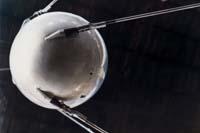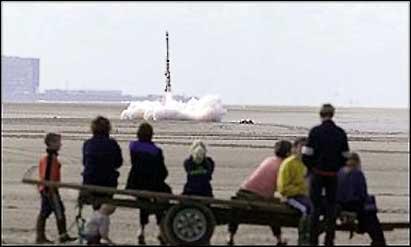Animals in space
2007/05/19 Galarraga Aiestaran, Ana - Elhuyar Zientzia
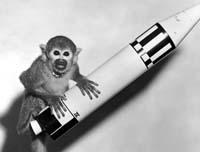
To test the influence of space travel on living beings, NASA launched small monkeys into space, among others. (Photo: ANDÉN)
In fact, in 1947 the Americans sent fruit flies on the V2 rocket along with some corn grains. They wanted to see how weightlessness and radiation would affect them, especially because they dreamed of sending man into space, and before they had to show that he would not suffer damage. For this purpose animals were used, not only fruit flies, but they soon began to spacing larger animals, especially small monkeys, chimpanzees and dogs.
The first of them was the monkey Albert I. It was placed in space by the Americans, on June 11, 1948, without great propaganda. Perhaps because they suspected he would die? After him, in a year and a half, three other monkeys were sent (Albert II, III and IV) who all died. It should be noted that they were traveling anesthetized. In addition, the last one was placed instruments of measure of sanitary parameters that showed that the flight had not caused damage and that died in the impact of landing. Other Albert, apparently, had the same fate.
Dogs cosmonauts
But they also succeeded: In August 1948, an unanesthetized mouse was sent. During the trip they took photos and saw it was fine. However, the best was that it survived the impact of landing. However, the vast majority of the mice sent later died.
Americans continued to send apes and mice in the coming years. For their part, the Soviets, after trying with rats and mice, decided to send their small dogs, hoping that in flight they were quieter than the monkeys. In addition, females were chosen, since their feces are easier to collect than those of males.
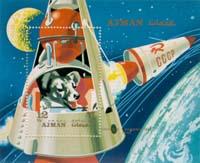
An Arab stamp of the year 1971 with the image of Laika. (Photo: US Institute of Health)
Between 1951 and 1952 nine rockets were sent, each with a pair of dogs. In addition, three dogs traveled to space twice, so they showed that the flights did not harm them. All flights were suborbital.
In 1957 they managed to put a dog in orbit. It was popularized by the name of Laika, although it was actually called Kudriavka (“Kizkurtxiki” in Basque). The Americans called him Muttnik, the “dirty Russian dog” more or less.
The truth is that he was a small grey dog who caught off the street. Without just training, they put him in the capsule of Sputnik 2 and took no time to prepare the controlled return. Thus, Laika spent ten days in the orbit of Earth. During that time they saw eating and barking with cameras, but there is no image of his death. It was destroyed with the rocket as it entered the Earth's atmosphere.
Other towns, other animals
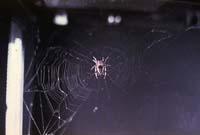
Spider Aravella making net in the spacecraft. (Photo: ANDÉN)
After Laika, at least ten dogs were sent to perform orbital and suborbital flights until April 12, 1961. That day Juri Gagarin became the first person to travel to space. It was Soviet, of course.
In addition to the Soviet Union and the United States, other countries have brought animals into space. For example, France sent a rat into space in 1961. In 1962 he sent two new rats and, a year later, the cat Félix. The cat was placed electrodes in the head to follow the activity of the brain. He survived the space trip, but the next cat they sent him died.
Animals from other species have also been sent for special experiments. Sometimes the results have been really curious. For example, in 1973 the Americans sent two spiders, Anita and Arabella. They wanted to know how they were involved in building a network of spiders.
In its beginnings, Anita and Arabella moved adrift and manufactured small networks. Little by little they began to build larger networks, but they had defects. It took three weeks to build deformed networks. The most interesting thing is that the thread was much weaker than normal. Because there was no gravity, they did not need so strong thread and, somehow, they were able to adjust the hardness of the thread.
At that time, two fish were also sent to see how they were oriented without gravity. Well, although they were first spinning around each other, they ended up swimming with their belly looking at the glass walls.
In the International Space Station are animals of various species, all of them small, such as flies and other insects, worms, sea urchin larvae, fish, etc. Despite their small size, the experiments involved are of great value, so they are not banal.
Published in Gara.

Gai honi buruzko eduki gehiago
Elhuyarrek garatutako teknologia





